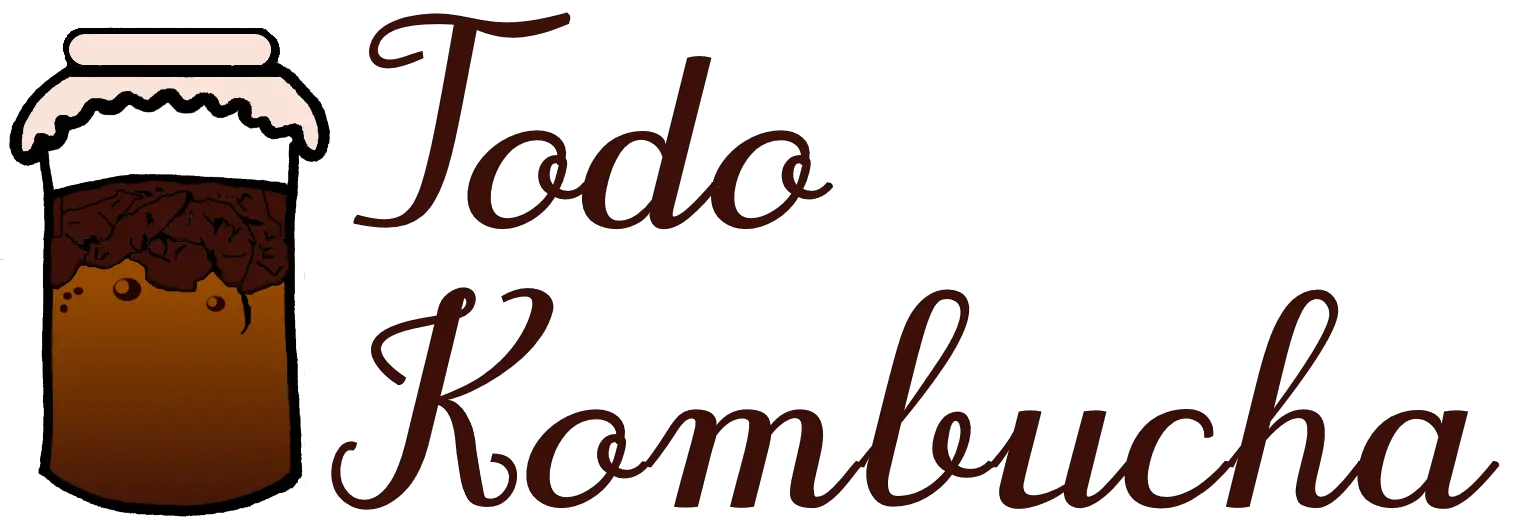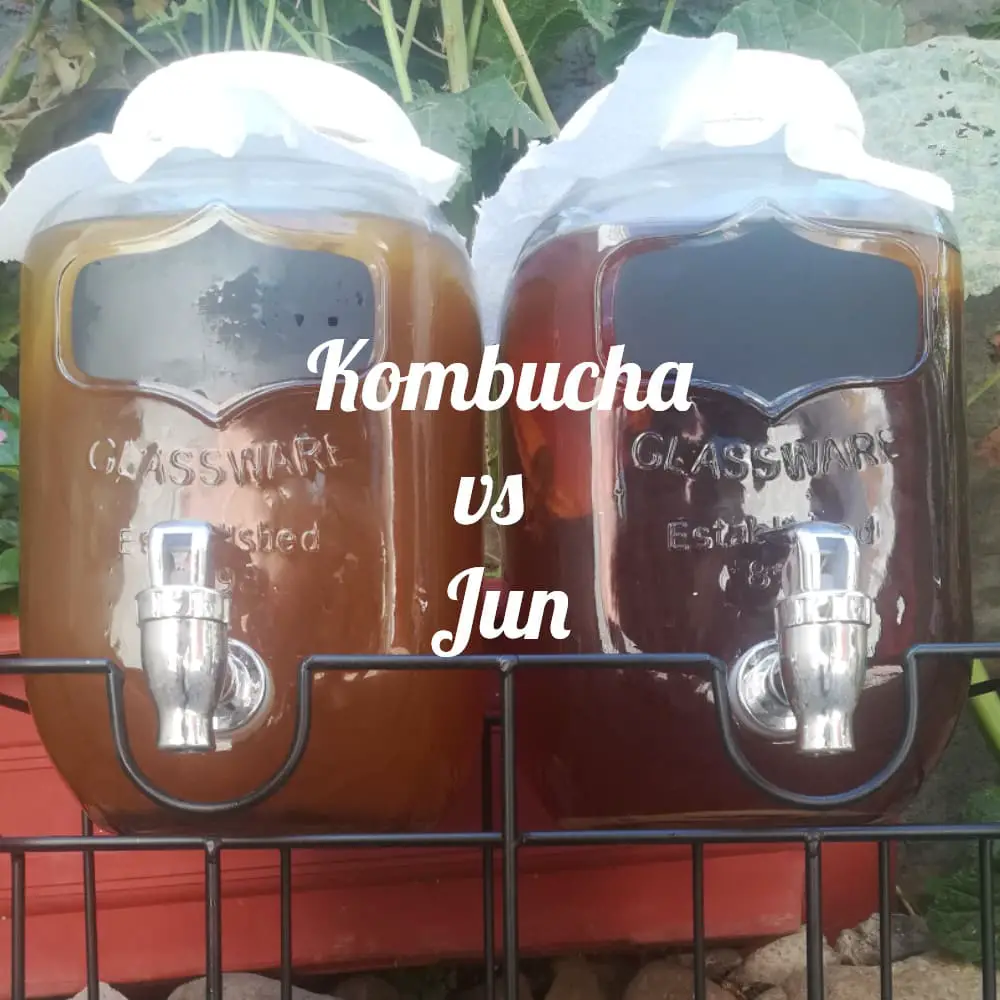Nowadays it is very important to consume fermented foods rich in probiotics due to all the benefits it brings to health, especially for those people who are aware and promoters of healthy living, and in that aspect, we come to today’s comparison, kombucha vs jun.
Jun and kombucha are probiotic beverages products of the fermentation of SCOBY, that is, a group of specific bacteria and yeasts that live symbiotically that manages to metabolize substrates into products that benefit the intestinal microbiota.
Both drinks have many similar characteristics and even the same fermentation of kombucha serves as a culture starter for the creation of the jun, it can be said that they are like familiar since it has the same relationship in terms of benefits in general, elaboration process, bacteria, and yeasts.
What do Jun and kombucha have in common?
Jun and kombucha have several characteristics in common since they share many elements at the time of their manufacture, starting with SCOBY.
A SCOBY of Jun is nothing more than the same one that was used to make kombucha, with the exception that it has been trained to use honey as food instead of the traditional refined sugar.
From the above it is easy to conclude that factors such as origin, probiotics, or metabolites they contain are the same or very similar, in the same way that both can even be made with green tea.
An interesting point is that the fermentation conditions are modified, where curiously the jun adapts better to slightly lower temperatures and fermentation times are also shorter, but we will talk about this later.
It is important to mention that its main difference between the two drinks are its main ingredients, jun is based on green tea and honey while kombucha is green or black tea and sugar.
What are the benefits of Jun and kombucha?
In kombucha and Jun we can find the following properties [1] [2]
- Strengthens the immune system by the presence of vitamin C.
- It stimulates the digestive process by balancing the intestinal bacterial flora.
- They are low in calories.
- It protects the intestine against infections due to the production of immunoglobulins, the action of probiotics.
- Antioxidant eliminating free radicals.
- As a treatment for inflammation of the throat and tonsils from the use of honey.
- Nervous system stimulant containing caffeine (methylxanthine)
- Diuretic by increasing the glomerular filtration rate at the renal level (typical of green tea).
Contraindications of Jun and kombucha
Kombucha is generally banned in pregnant and nursing people, due to the alcohol and caffeine content it contains. However, in the same way that we mentioned when we analyzed its effect on certain diseases, there is no scientific evidence that prohibits its consumption in these people, so it is a simple general recommendation. [3]
In the case of certain diseases such as HIV, patients receiving chemotherapy and radiotherapy (Immunosuppressed, its consumption is usually contraindicated, where the general normal is that if you know that you are very fond of contracting diseases, you try not to recommend kombucha, even when it has positive effects on the immune system. [4]
In other pathologies such as diabetes due to honey consumption or alterations related to bacterial overgrowth, moderate consumption is recommended.
Speaking of candida, you can check out our post on kombucha and yeast infections.
Recommended dosage to consume Jun and kombucha
Both drinks have the same process of preparation and microorganisms the dose to be consumed can be the same.
If it has never been consumed, you can start with 100 ml a day, according to tolerance and increase until you reach a daily intake of “120 to 360 ml” distributed before the main meals.
In case of diabetes, consumption can be in less quantity per day, so as not to alter blood glucose levels due to the sugar added to kombucha.
Are the probiotics in Jun and kombucha the same?
Kombucha and Jun have the same probiotics because they have the same microorganisms in both bacteria and yeast, and even kombucha’s SCOBY is trained as a starter for the preparation of jun.
Differences: kombucha vs Jun:
Here we will generalize the characteristics of the two drinks in view of the fact that both products do not have much difference from each other, except for certain sensory characteristics such as flavor, and raw material.
Origin:
Both come from the Asian continent, exactly from China.
Raw material and its preparation:
In kombucha, the raw material is green or black tea and sugar.
In the Jun, the raw material is green tea and honey. [5]
The elaboration process: to this liquid a symbiotic culture of bacteria and yeast is added sugar in the case of kombucha and honey for the jun. For fermentation it is placed in a glass container covered with a cloth that allows air circulation without letting dust or insects enter and the mixture is left to rest for a week or more.
Microorganisms present:
In kombucha and Jun, it is a symbiotic colony of different bacterial species and probiotic yeasts such as: Acetobacter xylinum, Gluconobacter bluconicum. And of the yeasts identified as: Schizosaccharomyces pombe, Schizosaccharomyces cerevisiae, Zygosaccharon bailii, Kloecera apiculata, Brettanomyces bruxellensis, Brettanomyces lambicus, Brettanomyces Custersii, candida stellata. [6]
Fermentation conditions:
Kombucha is fermented with an average ambient temperature of 21 to 27 ° C that requires for 7 to 15 days, but the jun instead requires a fermentation time of 5 to 10 days at a temperature between 18 ° to 21 ° C.
Nusers:
In kombucha and Jun, it stands out for its content of vitamins such as: B1 (thiamine), B2 (riboflavin) and B3 (niacin) and high in vitamin C (ascorbic acid), essential oil and minerals such as magnesium, zinc, phosphorus, iodine, polyphenols, flavonoids, and xanthine (caffeine).
Sabor, aroma and color.
As for kombucha when made with black tea, the presence of tea flavins that are coloring compounds produced during its oxidation gives the color of reddish-brown to black to this drink and for its elaboration it is very aromatic with astringent flavor and more acid than jun.
As for the jun for its elaboration with green tea during its oxidation gives it the yellowish-green color, slightly aromatic with a slight acid taste and sweeter than kombucha. (3)
Texture
Both being drinks are liquid textured and somewhat foamy.
We will clarify some of the main differences in a comparative style chart to make it clearer and more concise for readers.
| Characteristics | Jun | Kombucha |
| Origin | China | China |
| Raw material | Green tea and honey | Black or green tea and sugar |
| Microorganisms | Bacteria and yeasts | Bacteria and yeasts |
| Fermentation time | 5 to 10 days | 7 to 15 days |
| Fermentation temperature | 18 to 21°C | 21 to 27°C |
| Nutrients | Low calorie | Low calorie |
| Taste | Slightly acidic and sweeter | Slightly acidic and less sweet |
| Aroma | Slightly vinegary | Slightly vinegary |
| Colour | Green or yellowish | Brown or reddish |
| Texture | Liquid | Liquid |
| Composition | Liquid | Liquid |
| Recommended dose | 120 to 360 ml daily | 120 to 360 ml daily |
If you liked the post, there are a variety of articles that may be of interest to you as well. Also, I’m constantly improving the articles with the latest I’m researching, so don’t miss too long and revisit the content.

